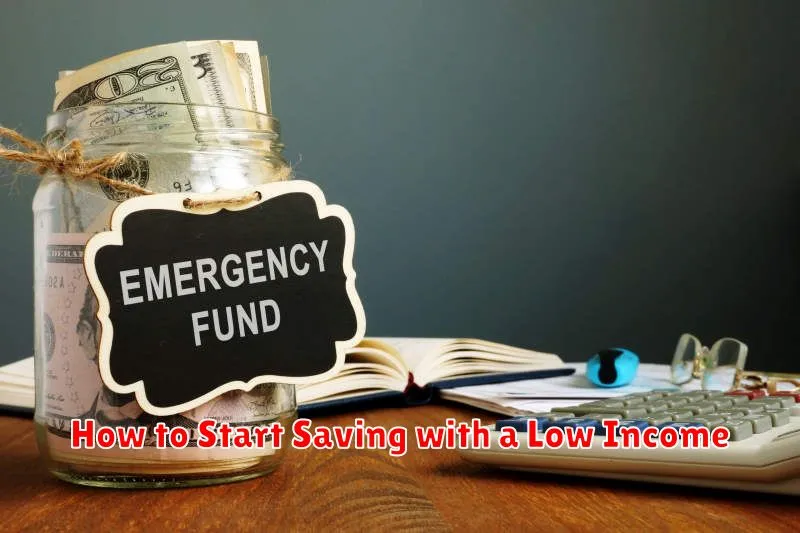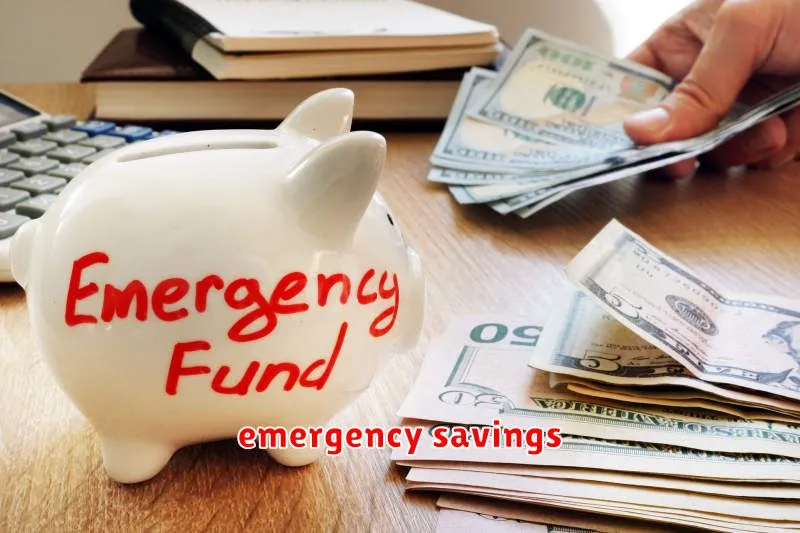Facing unexpected financial emergencies can be daunting, but with a well-structured emergency fund, you can navigate unforeseen circumstances with confidence. This article explores the essentials of building an emergency fund, providing practical guidance on determining the optimal savings amount, choosing the right account type, and developing effective saving strategies to safeguard your financial well-being against job loss, medical expenses, home repairs, and other unforeseen events. Learn how to protect yourself and your family from financial hardship by creating a robust financial safety net.
What is an Emergency Fund and Why You Need It

An emergency fund is a savings account specifically designed to cover unexpected expenses. It acts as a financial safety net, protecting you from the devastating impact of unforeseen events.
The primary purpose of an emergency fund is to provide a financial cushion during difficult times. This could include job loss, medical emergencies, unexpected home repairs, or car trouble. Without one, you might be forced into debt, depleting your savings, or even worse, facing serious financial hardship.
Why is it crucial? An emergency fund prevents you from relying on high-interest debt like credit cards to cover unexpected costs. It offers peace of mind, knowing you have the resources to handle life’s curveballs without significant financial stress. It’s a fundamental component of responsible financial planning.
Building an emergency fund allows you to navigate challenging situations with financial stability. This reduces stress, enabling you to focus on resolving the problem at hand rather than worrying about how to pay for it.
How Much Should You Save?
The general recommendation is to have 3-6 months’ worth of living expenses saved in an emergency fund. This covers essential costs like housing, food, transportation, and healthcare. The higher end of this range (6 months) is advisable for those with less stable income or higher risk of unexpected job loss.
However, the ideal amount is personalized. Consider your individual circumstances: job security, existing debts, family size, and health conditions all impact how much you should aim for. A larger emergency fund provides greater security and peace of mind.
Start small if needed; even saving a small amount consistently is better than nothing. Gradually increase your savings as your financial situation improves. The key is to build a safety net to protect yourself against unforeseen events.
Where to Keep Your Emergency Fund
Accessibility is key when choosing where to keep your emergency fund. You need to be able to access the money quickly and easily in case of an emergency. Therefore, avoid investments with penalties for early withdrawal.
High-yield savings accounts and money market accounts are excellent options. They offer better interest rates than traditional checking accounts while maintaining easy access to your funds. Consider a federally insured account to guarantee the safety of your savings.
While some may consider keeping a small portion of their emergency fund in cash at home for immediate needs, it’s generally not recommended to store a significant amount due to the risk of theft or loss. The majority should remain in a secure, interest-bearing account.
Ultimately, the best location for your emergency fund is a place that prioritizes liquidity and safety, ensuring you can readily access the funds when unforeseen circumstances arise.
How to Start Saving with a Low Income

Building an emergency fund on a low income requires careful planning and commitment. Small, consistent contributions are key. Even saving a small amount, such as $10-$20 per week, can accumulate over time.
Track your spending to identify areas where you can reduce expenses. Look for opportunities to cut back on non-essential items like subscriptions or dining out. Consider using budgeting apps to help monitor your finances.
Explore additional income streams. This could include freelance work, selling unused items, or taking on a part-time job. Even a small increase in income can significantly boost your savings.
Automate your savings. Set up automatic transfers from your checking account to your savings account each pay period. This removes the temptation to spend the money and makes saving effortless.
Prioritize savings. Treat your savings goal like a non-negotiable bill. Once you’ve identified the amount you can comfortably save, stick to it, even when facing financial challenges. Remember, building an emergency fund is a marathon, not a sprint. Consistency is crucial.
When to Use It (and When Not To)
An emergency fund serves as a crucial safety net for unforeseen circumstances. Use it for unexpected expenses that threaten your financial stability, such as major car repairs, urgent medical bills, or sudden job loss. It’s designed to cover essential living costs during such periods, preventing you from accumulating debt.
Do not use your emergency fund for non-essential spending or planned purchases. This includes leisure activities, non-urgent home improvements, or frivolous purchases. These expenses should be budgeted for separately. Using your emergency fund for anything other than genuine emergencies depletes its purpose and leaves you vulnerable to future unforeseen events.
Consider your emergency fund as a last resort for truly unexpected and unavoidable situations that significantly impact your financial well-being. Proper planning and budgeting should address most other expenses.
Tips to Rebuild Your Fund After an Emergency
Rebuilding your emergency fund after an unexpected event requires a structured approach. Prioritize needs over wants. Carefully review your budget, identifying areas where you can cut back on non-essential spending. This might involve temporarily reducing dining out, entertainment, or subscriptions.
Increase your income streams. Explore opportunities for additional income, such as freelancing, part-time work, or selling unused items. Every extra dollar counts towards replenishing your emergency fund.
Automate your savings. Set up automatic transfers from your checking account to your savings account each month, even if it’s a small amount. Consistency is key to rebuilding your fund steadily.
Track your progress. Regularly monitor your savings progress to stay motivated and adjust your strategy as needed. Celebrate milestones to maintain your momentum.
Seek professional advice. If you’re struggling to rebuild your fund, consider consulting a financial advisor for personalized guidance and strategies tailored to your financial situation. They can help you develop a comprehensive plan to reach your savings goals.
How to Stay Disciplined and Not Dip Into Savings
Maintaining discipline with your emergency fund requires a strategic approach and a strong mindset. Begin by clearly defining your emergency fund goals—how much you need and why. This clarity provides motivation during challenging times.
Automate your savings. Set up automatic transfers from your checking account to your savings account each month. This removes the temptation to spend those funds.
Track your progress. Regularly monitor your savings growth. This reinforces your commitment and helps you stay on track. Visualizing your progress can be incredibly motivating.
Avoid impulsive spending. Develop a budget and stick to it. Before making any non-essential purchase, ask yourself if it’s truly necessary and if it aligns with your financial goals. Delaying gratification builds self-control.
Create a buffer. If possible, build a slightly larger emergency fund than initially planned. This provides a safety net and reduces the temptation to dip into savings for smaller, unexpected expenses.
Seek support. Talk to a trusted friend, family member, or financial advisor about your goals and challenges. Accountability and guidance can significantly increase your success rate.
Remember, accessing your emergency fund should only be for true emergencies, such as medical bills or job loss. Maintaining discipline now will protect you from significant financial hardship later.
Tools to Help Automate Emergency Saving
Automating your emergency savings is crucial for consistent growth. Several tools can significantly simplify this process. High-yield savings accounts offer competitive interest rates and easy accessibility. Many banks and credit unions provide options for automatic transfers, seamlessly moving a predetermined amount from your checking account to your savings account each payday.
Budgeting apps such as Mint or YNAB (You Need A Budget) can assist in tracking your spending and identifying areas for savings. Many offer features to automate transfers to savings based on your budgeting goals. Some even allow you to set specific savings goals, such as an emergency fund, and track your progress.
For more hands-off automation, consider utilizing robo-advisors. These platforms manage your investments and can allocate a portion of your funds towards a high-yield savings account or a similar low-risk investment vehicle. This allows for automated investing and growing your emergency fund without constant manual intervention.
Finally, employer-sponsored retirement plans often offer options to contribute a percentage of your salary to savings, often outside of your taxable income. While not specifically emergency funds, these contributions can be supplemented by additional automated transfers to a designated savings account.

